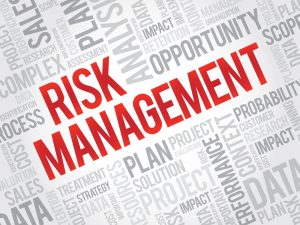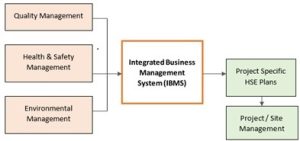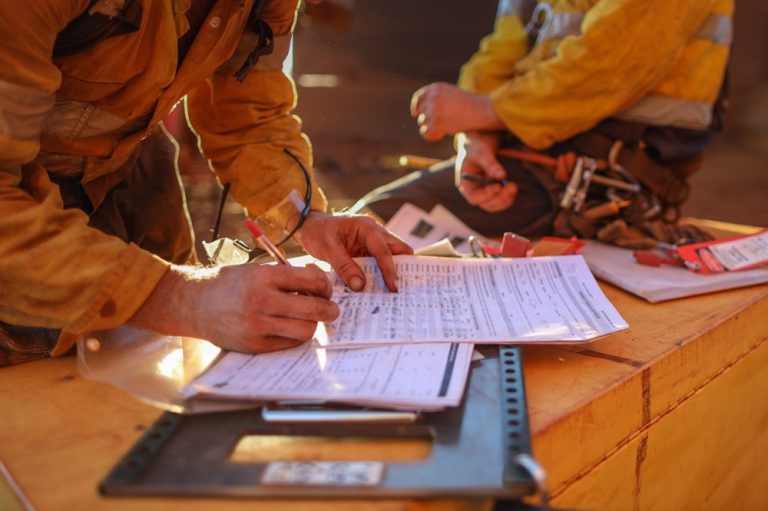HSEQ Management Systems
In today’s rapidly changing business landscape, it is imperative to prioritize the HSEQ aspects (health, safety, environment, and quality) of organisational operations.
Developing and implementing a comprehensive HSEQ management system and plan is no longer just a choice; it’s a necessity. Tamara’s guidance makes the HSEQ plan a dynamic force driving business success and excellence.
Management Systems that integrate health, safety, environmental and quality requirements are an integral part of meeting legislative requirements and, in many cases, is essential to meet pre-qualification requirements for state government, local council, and larger scale private sector work.
At Red Letter Consulting Services, we create custom-built HSEQ integrated management systems that are personalised to your business.
Companies often already have some form of policies and procedures that we will assess for compliance and integrate into the new/updated system.
By combining existing individual health and safety, environmental and quality management plans into an integrated HSEQ Management System, we can make it easier to manage, maintain, and update your systems.
This can potentially turn three documents into 1.
Our consultative approach ensures that every facet of the plan aligns with the client’s specific operations and goals.
Tamara’s expertise lies in bringing these existing practices into one cohesive and efficient plan, saving time and money while reinforcing a culture of safety, environmental responsibility, and quality assurance within the organization.
In Australia, as in many other parts of the world, ensuring the safety and well-being of employees, protecting the environment, and delivering high-quality products and services are critical for sustainable business success.
Internationally, a HSEQ management system is considered best practice for businesses as it addresses and ensures:
Legislative Compliance: Australia has strict regulations and laws governing workplace health and safety, environmental protection, and product quality. Businesses that fail to comply with these regulations can face severe penalties, legal actions, and reputational damage.
Employee Safety and Well-Being: The health and safety of employees are paramount. A HSEQ plan helps reduce workplace accidents and illnesses, enhancing employee well-being and morale. Healthy and motivated employees are more productive.
Environmental Responsibility: As the global community grapples with environmental challenges, Australian businesses are expected to reduce their environmental footprint. A HSEQ plan helps identify and manage environmental risks, promoting sustainability.
Quality Assurance: Delivering high-quality products and services is a competitive advantage. A HSEQ plan can ensure consistency, reliability, and customer satisfaction.
Risk Mitigation: By proactively identifying and addressing potential risks, businesses can avoid costly incidents and downtime.

What is an Integrated HSEQ Management Plan?
A Health and Safety, Environment, and Quality (HSEQ) management plan is a comprehensive system that outlines an organization’s commitment to managing its operations, focusing on the management of health, safety, the environment, and quality.
It serves as a roadmap to ensure the organisation complies with legislative requirements and industry standards, minimizes risks, and continuously improves its performance in these areas.
What Should an HSEQ Plan Include?
Integrated Management Systems should comply with the following Australian Standards:
• AS/NZS ISO 45001 Occupational Management Systems
• AS/NZS 18001 Environmental Management Systems

On the engagement of Red Letter Consulting Services, we will meet with the Client and undertake a compliance survey to ensure that we fully comprehend the scope of the organisations activities, current policies, procedures and documentation in place and any gaps in current systems.
An integrated management system should meet the requirements of Australian Standards and the current legislative requirements of the organisation.
The specifics of an integrated management plan will vary depending on the organisation.
It is important to engage with a consultant that takes the time to understand the needs of your business.
An effective HSEQ plan is a detailed document that encompasses various elements.
The essential components of a HSEQ plan should include:
Policy Statement: The plan should begin with a clear and concise statement demonstrating the organization’s commitment to HSEQ. This statement sets the tone for the plan and outlines the company’s goals and objectives in these areas.
Risk Assessment: An in-depth analysis of potential risks in the workplace, environment, and production processes. This section identifies hazards, assesses their likelihood and impact, and provides strategies for risk mitigation.
Legislative Compliance: To ensure that the organization operates within the bounds of the law, the HSEQ plan must outline the legal requirements relevant to the business and detail how the company intends to meet these obligations.
Procedures and Guidelines: A comprehensive set of procedures and guidelines for employees to follow in their daily operations. These procedures should cover health and safety protocols, environmental protection measures, and quality control processes.
Responsibilities and Roles: Clearly define the roles and responsibilities of individuals or teams involved in HSEQ management. This includes roles like HSEQ managers, safety officers, and environmental stewards.
Training and Awareness: Outline the training programs and initiatives designed to enhance employee awareness and competence in HSEQ matters. Continuous training and development are essential for maintaining a culture of safety and quality.
Emergency Response and Preparedness: Describe the steps to be taken in emergencies, including evacuation plans, contact information, and response procedures.
Monitoring and Reporting: Establish a system for monitoring and reporting HSEQ performance. This should include metrics, key performance indicators, and regular reporting mechanisms to track progress and identify areas for improvement.
Audit and Review: Set up a schedule for internal and external audits to ensure that the HSEQ plan is effectively implemented and complies with applicable laws and regulations.
Continual Improvement: An HSEQ plan should not be static. It should emphasize the need for continuous improvement in all aspects of health, safety, environment, and quality.
Regular assessments, audits, and reviews are key to this process.

Legal Requirements for Businesses in Australia
Australia has a robust legal framework governing HSE matters. Businesses operating in Australia are subject to various legislation, regulations and standards to ensure employees’ well-being and environmental protection.
Key legal requirements:
Work Health and Safety (WHS) Legislation: The OHS Act 2004 (Vic) and the WHS Act 2011 (Cth) governs workplace safety in Australia. It imposes obligations on employers to ensure their health and safety in the workplace. This includes identifying and managing risks, providing safe work environments, and consulting with employees on safety matters.
Regulatory Authorities: Regulatory authorities at the federal and state levels oversee compliance with HSEQ regulations. These agencies conduct inspections, audits, and investigations to ensure businesses comply with legislative requirements.
Environmental Protection Laws: Australia has a range of federal and state laws and regulations governing environmental protection. These cover issues such as pollution prevention, waste management, and the protection of natural resources. Companies must comply with these laws, often through permits and licenses.
Australian Standards, Compliance codes and guidance material.
What is the purpose of Australian Standards?
Australian Standards are documents that have been designed to provide guidance in health and safety, performance and reliability through the specifications of management systems.
An integrated management system generally consists of Quality Management, Health and Safety Management and Environmental Management, however a management system can be created to be a stand alone system or can incorporate any number of Standards that are critical to your business (ie Food Safety).
- AS/NZS ISO9001 Quality Management
- AS/NZS ISO45001 Health and Safety Management
- AS/NZS ISO 14001 Environmental Management
Standards for Health and Safety, Environmental and Quality Management overlap in such a way that they are ideal for an integrated management system.
Why triple up with three documents when 1 will suffice?
By streamlining the systems together, the integrated management system improves the processes of the business whilst meeting Australian and International Standards.
Quality Standards: Depending on the industry, businesses may be subject to specific quality standards and certifications.
ISO 9001 is an internationally recognized quality management system standard that many organizations aim to achieve.
Achieving the requirements of this standard shows the company’s commitment to the highest of standards and gives the client piece of mind.
Excellence in quality management is the cornerstone of the system, allowing for continual improvement as the system matures.
Codes of Practice, Compliance Codes and relevant guidance material are crucial documents which help organisations to comply with legislative requirements.
These documents provide minimum requirements that businesses must meet.
Business must, at least, meet the minimum requirements.
Reporting and Record-Keeping: Businesses must maintain records of their HSEQ activities, incidents, and compliance efforts. Reporting requirements vary by industry and jurisdiction.
A HSEQ management plan is not merely a document but a commitment to the well-being of employees, the protection of the environment, and the delivery of high-quality products and services.
Businesses that prioritize HSEQ meet legislative requirements and position themselves for long-term success.
By understanding the importance of HSEQ plans, their key elements, and the legal requirements, organizations can navigate the complex landscape of modern business while fostering a culture of safety, environmental responsibility, and quality assurance.
The HSEQ plan, more than just a regulatory document, evolves into a strategic blueprint for growth.
It is not intended to collect dust on a shelf but rather serve as a living, breathing reference document for the organization, constantly referred to and refined to adapt to changing circumstances.
In doing so, they ensure their place at the forefront of best practices in Australia’s competitive market.
In collaboration with Tamara at Red Letter Consulting, clients embark on a journey to create an HSEQ plan that is comprehensive and tailored to their unique business needs.
